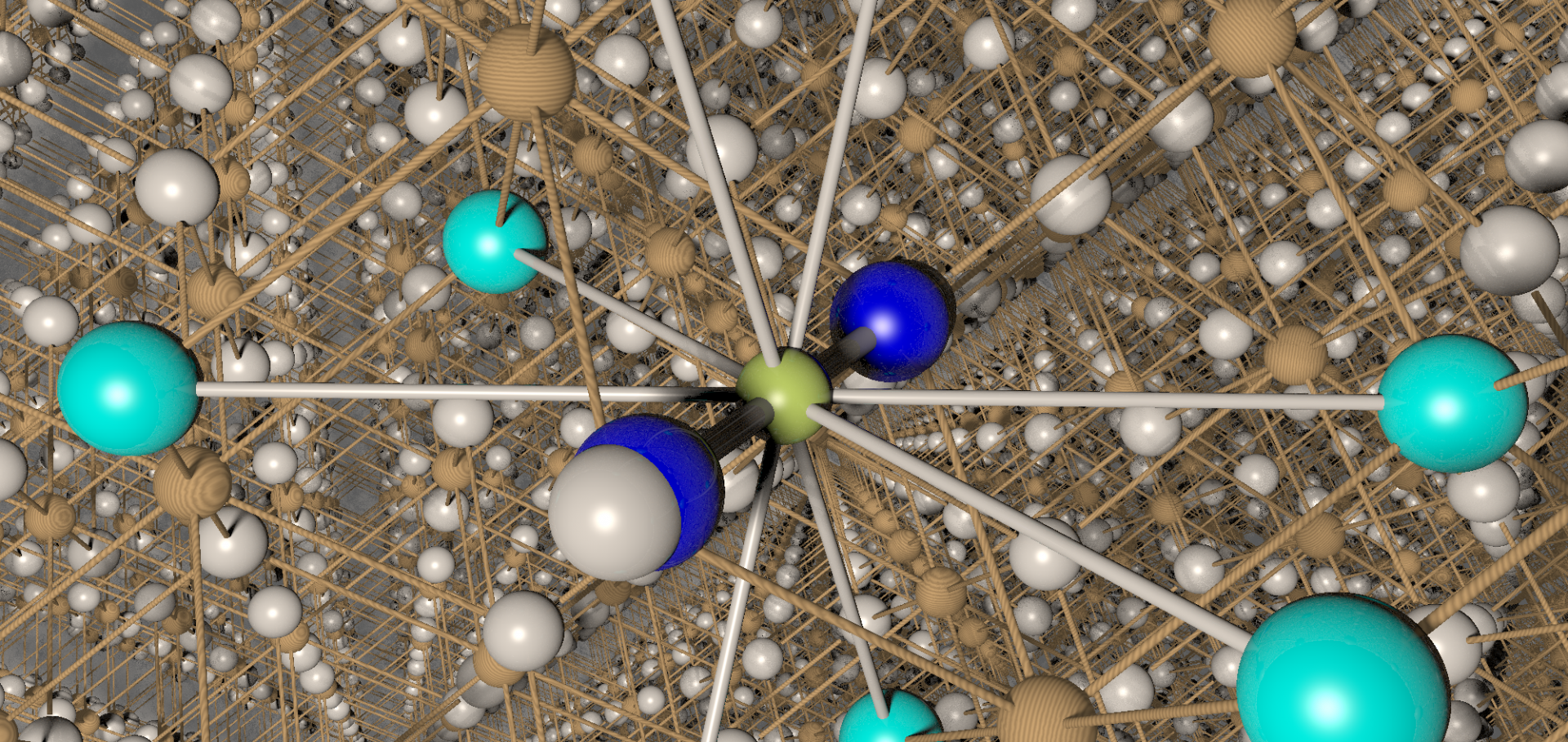Unconventional cyclotron resonance in Sr2RuO4
PHYSICA B 294 (2001) 379-382
Abstract:
An angle-dependent study of the magneto-optical response of the p-wave triplet-paired perovskite superconductor Sr2RuO4\ reveals several new cyclotron resonance effects. We observe an odd-harmonic cyclotron resonance series, probably arising from the gamma Fermi surface, with a fundamental cyclotron mass of 12.6 m(e). In addition, we find several resonance branches which behave in unconventional ways owing to the unusual nature of the band dispersion in this material. The results confirm the complexity of the Sr2RuO4 Fermi surface topology and show that earlier conclusions drawn from millimetre-wave experiments should be reconsidered. (C) 2001 Elsevier Science B.V. All rights reserved.Crystal structure and electronic properties of Ca4Mn2TiO9.93, an n=3 Ruddlesden-Popper compound
J MATER CHEM 11:1 (2001) 160-167
Abstract:
Traditional solid state synthetic methods were used to prepare a polycrystalline sample of the n = 3 Ruddlesden-Popper phase Ca4Mn2TiO9.93. The crystal structure (space group Pbca, a = 5.31411(5), b = 5.31148(5), c = 26.9138(2)Angstrom) was determined by the simultaneous analysis of neutron and X-ray diffraction data, with near-edge anomalous scattering being used to provide contrast between Mn and Ti cations. The latter show a small preference for the octahedral sites at the centre of the three-layer perovskite blocks within the structure. Neutron diffraction data collected at 5 K show no evidence for long-range magnetic ordering, although an enhanced magnetisation with a weak remanence is observed at low temperature; this is ascribed to the presence of antisymmetric exchange interactions. Ca4Mn2TiO9.93 is a semiconductor with a temperature-dependent activation energy of similar to 100 meV. Only weak (rho (B)/rho (0) > 0.9 in 14 T at 75 K) magnetoresistance was observed.Fermi surface shape and angle-dependent magnetoresistance oscillations
JOURNAL OF PHYSICS-CONDENSED MATTER 13:10 (2001) 2271-2279
Organic magnetic materials studied by positive muons
HYPERFINE INTERACT 133:1-4 (2001) 169-177
Abstract:
Positive muons can be implanted into organic and molecular magnets in order to study their internal magnetic field distribution and any associated dynamics. The muon behaves essentially as a "microscopic magnetometer", sensitive to local magnetic order and magnetic fluctuations. We describe some recent experiments using this technique which were performed on a variety of organic systems, including nitronyl nitroxide magnets and materials with spin-Peierls ground states, MF-M(TCNQ)(2) and DEM(TCNQ)(2), and demonstrate how the technique can give information concerning their ground states.Enhancement of the magnetoresistance at the curie temperature of the ferromagnetic insulator La1.5 Sr0.5 MnRhO6
Physical Review B - Condensed Matter and Materials Physics 62:10 (2000) R6077-R6080


